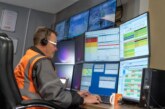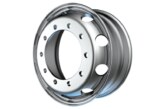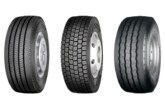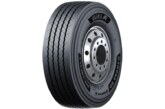
Derek Bryan, VP EMEA for Verizon Connect, looks at the top trends in technology that could drive the mobile workforce and how they will help transform fleets, supply chains, logistics, and businesses themselves.
New technologies are accelerating the pace of change for businesses across Europe, with many unsure how developments in AI and Machine Learning, data analytics, and other innovations will impact their operations in 2020. Against this landscape, Verizon Connect considers the technologies and innovations that are likely to be the most transformative in the coming year.
Transforming the customer experience
AI and Machine Learning will open up new possibilities that seemed unimaginable only a short few years ago. With more computing power at the edge, businesses will be able to capture more data from across every aspect of their operations. At the same time, AI and Machine Learning will help create new ways to use these insights to transform customer experience.
For increasingly mobile workers, this will result in more ‘frictionless’ engagement with managers. For example, in the event that a technician is unable to complete a required job for one reason or another, systems should be able to automatically identify the delay and assign another colleague to the next job – all without intervention from the worker or causing inconvenience to customers.
Next-generation predictive technology
Embracing AI at scale will also help accelerate the rollout of next-generation predictive and preventative technology to businesses of all sizes. This will give businesses near real-time updates into the past and future performance of every asset at their disposal. Thanks to recent advances in technology, assets such as trailers are now capable of reporting more information to managers than ever before.
With these new insights, fleet managers can more efficiently and effectively manage both their fleets and extended networks of mobile assets. Data on road conditions, weather updates, and mechanical faults can be used to predict risks before they impact customers or other workers.
From connected fleet to workforce
An explosion in the growth of data, accompanied by a rapid expansion in telematics, will help unleash the potential of the connected workforce. Fleet-dependent service providers will move from a sole reliance on vehicle monitoring data to gaining more information on those carrying out work on those vehicles.
We’ll see new solutions that combine vehicle location data and technician status insights, which will help operations managers make faster and more informed decisions. In addition, fleet managers will do all of the above using a single application, without having to switch between separate telematics and field service systems. As a result, fleet-reliant businesses will stay consistently and firmly connected, helping to mitigate the risk of disruption.
Shouting about safety
We will also see mobile workers harness the power of voice recognition technology to help improve their safety. Despite the growing popularity of consumer digital assistants in recent years, there has been a slower rate of adoption of this technology from enterprises. Improved voice recognition technology will, however, become an increasingly powerful tool for the mobile worker, allowing for hands-free input of data, activation of tasks, and streamlined communication with managers.
Most importantly, the increasing use of voice recognition means managers can be safe in the knowledge that speed of communications does not come at the cost of safety. Mobile workers can keep in constant contact with their team without having to take their eyes off the task at hand. This is especially useful in the fleet space, as it helps create a better, safer fieldworking experience.
The 5G effect
As vehicles continue to add hardware and computing power to handle their data and make it actionable in the day-to-day, they need a transit mechanism to take that data out of the vehicle and communicate it with other vehicles and the overall internal infrastructure. The likely increase in data volumes is expected to be met by the faster, higher capacity of 5G network infrastructure.
One of the key potential outcomes of the move to 5G is the use of the vehicle as the centrepiece of a mobile work environment, helping it to serve as a single point of contact for all types of connected work. Integrating additional technologies like inventory control using RFID, Wi-Fi, online capture of data, and quick information exchange would further solidify the vehicle as the workspace of the future.
Final thoughts
One certainty about the future of fleet management is that technological innovation will continue to determine the competitive landscape for businesses. From enhancing customer experience to opening up operational efficiencies, fleet managers should be constantly looking for new capabilities enabled by technologies. At the same time, the foundations of future implementations also need to be set to make sure existing business models are capable of handling the change.
A single, centralised platform at the heart of the fleet-based business will help fleet managers to reduce any friction from transformation, and transition smoothly into the new digital business landscape.








